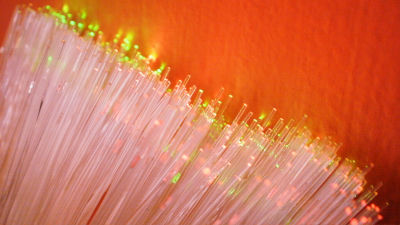What are the acoustic settings that the American public broadcasting organization NPR is particular about for radio recording?

Radio and television news media Current asked Sean Fox, senior director of acoustic engineering
A top audio engineer explains NPR's signature sound - Current
https://current.org/2015/06/a-top-audio-engineer-explains-nprs-signature-sound/
Sean Fox in front of NPR's studio

Mr. Fox:
NPR's sound is made up of so many elements. Focusing on the studio side, which is actually the simplest, it all starts with the mic. We use a simple

Current:
Rolled off the bass? Can you explain what that means?
Mr. Fox:
of course. Most high-end microphones, like the Neumann U87, have two switches on the back. One for the mic's directional switching, called Polarity, and the other for the bass roll-off. When the bass rolls off, I can't hear the low end of my voice. The mic itself muffles low frequency sounds.
Current:
How many Hz of frequencies are you removing? You're talking about ultra-low frequencies like 150Hz and 200Hz.
Mr. Fox:
If it's really low, it's 250Hz or less. If you're in the studio and you're unhappy with the bass and buzzing sounds coming out of your mic, and the technical staff can't do anything about it, one thing you can do is flip the bass roll-off switch on this mic. .
I don't want to dedicate resources to modifying the studio environment because studio acoustics are a whole other factor. NPR has been doing bass roll-off for decades, but it started because a lot of listeners listen to broadcasts while driving or commuting. Both in the past and now, when you open the windows of a car or train, you hear a low-pitched sound. We cut the bass to make the voice clear, open and easy to hear.

Mr. Fox:
In addition, more content is now being listened to through headphones from digital audio devices such as iPhones, but the bass from the outside reaches the ears a little beyond the headphones, so it's still a good idea to keep the bass roll-off setting. I found it beneficial.
And another factor is that I like to be close to the mic. For recordings with guests, I'm about 1 foot (about 30cm) from the mic, and for normal recordings, I'm about 6 inches (about 15cm) from the mic.
Current:
The closer you get to the mic, the more bass you hear. Why isn't that happening in your broadcast?
Mr. Fox:
The bass roll-off is at work here too. Also, I try not to hit the microphone directly from the front. I'm talking more from the side.
Current:
Are you directing the air coming out of your mouth to the side of the mic at an angle instead of going directly into it?
Mr. Fox:
that's right. we do.
Current:
I see. Speaking of which, you said you're using a Neumann U87. In my experience, the most common studio mic for broadcasters was the Electro-Voice RE20.

Mr. Fox:
Well, the old RE20.
Current:
The RE20 tends to sound muffled and raspy in the bass, and in my opinion it's not radio friendly. Therefore, it is important to use the roll-off switch on the mic to roll off the bass range, speak closer to the mic, or speak from a slightly oblique angle, as well as a pop guard to prevent pop noise.
Mr. Fox:
A quick follow up on RE20, I'm a big fan of RE20. I see a lot of stations using it, and I wouldn't deny that there are people using RE20. It's a great mic. If you want to keep the cost down, you can also use the RE20, which has the same performance as the Neumann U87. However, since the RE20's low-frequency attenuation is often a problem for broadcasters, we often see cases where the RE20 is used with flat sound quality.
I used the RE20 when I worked in Detroit. NPR also uses the RE20 occasionally, but he prefers a more authoritative sound, so he flattens the mic quality to bring out the bass. When I listened to the recording later, it seemed that the bass was reverberating, and when I rushed to the studio, someone had flipped the switch. In Detroit, all the switches were epoxyed to prevent that from happening.

Current:
Other than the mic, what is the most important factor?
Mr. Fox:
It's the structure of the studio. We shoot in a studio with very little reverberation and the walls are not hard. I want to mute the sound in the press room outside. The studio is located roughly in the middle of the press room, so it's isolated so that you can't hear anything but studio voices.
Current:
Insulating the studio from outside noise also requires sound diffusion so that the voices of people speaking in the studio do not reverberate in the room.
Mr. Fox:
Over the past decade, computer screens have become a common sight in studios. A computer screen is often very close to the microphone. Depending on the distance, electronic interference from the computer may appear as noise, and voices may be reflected on the computer screen.
Current:
I agree. Computer screens are smooth and hard, and they reflect sound easily.
Mr. Fox:
So what I do when I walk into the studio is 'turn on the mic and turn the input volume up.' Do not speak up here. It blows my ears off. Without saying a word, he listens to the sound of the fan in the room and adjusts it. At this time, there is no complete silence. Then, if your PC is right next to the mic, or a little closer, move it 2 feet away and hide it under a cabinet.

Current:
Do you have other secrets?
Mr. Fox:
In the public radio community, we don't modify the signal going to the station, we deliver the purest possible signal. This has been debated for a long time, but so far we haven't compressed or altered the signal from the studio to the satellite to the broadcaster. We know that over 600 broadcasters and their listeners have different needs. So we try to give broadcasters the purest sound possible and allow them to operate to their markets, with varying degrees of success. There is also talk of incorporating a bit of compression, especially in newscast units. I haven't done it yet, and I don't know if I'll ever do it, but sending a pure signal to the broadcaster via satellite is probably the last element of the source.
Related Posts:
in Note, Posted by log1i_yk






